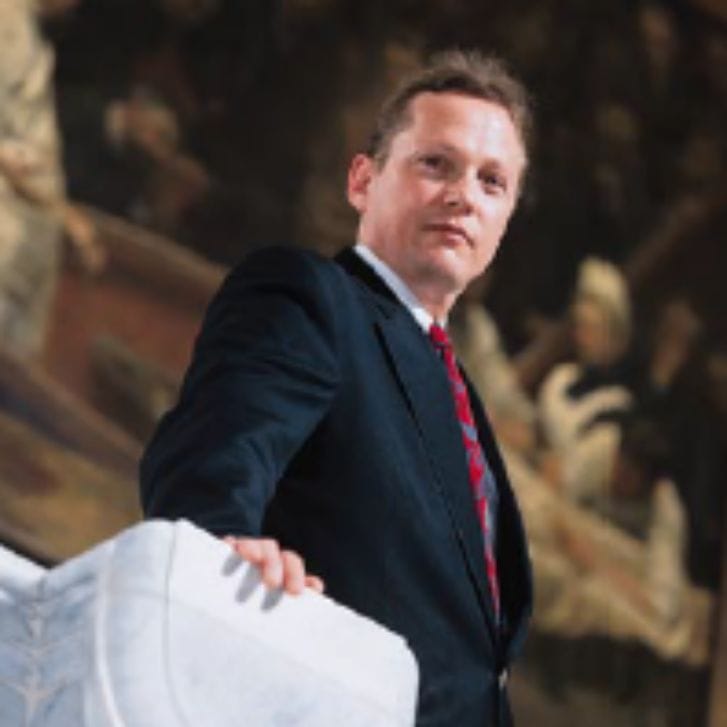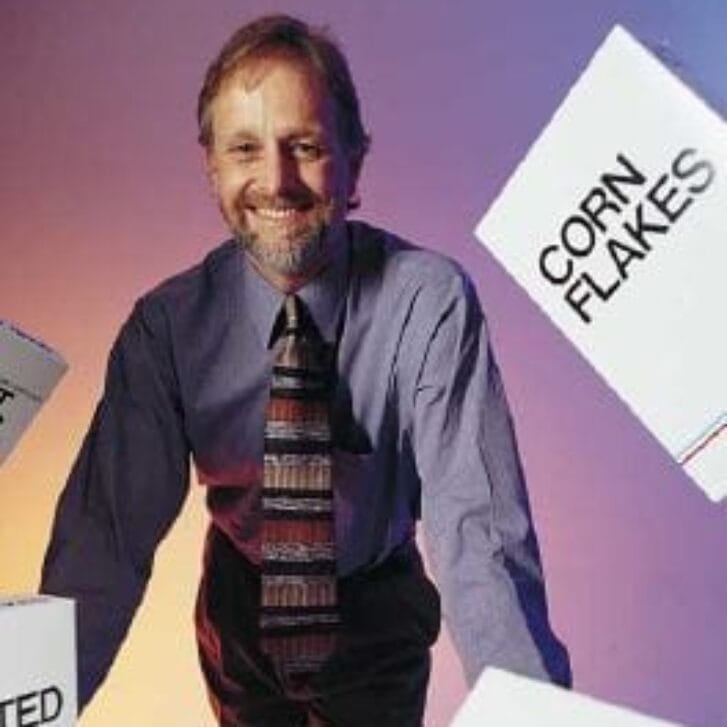Since 1965, the year he came to Wharton, Peter H. Knutson has taught accounting to more than 6,000 graduate and undergraduate students and hundreds of executives. He has won six teaching awards, five of them since 1990, and a course he created in 1970, “Problems in Financial Reporting,” has been one of the most popular elective courses ever taught in the MBA program.
Knutson, who is retiring this year, has also been witness to, and a participant in, profound changes within the accounting profession. In 1966, for example, Arthur Andersen & Co. hired its first woman from the MBA program. Today, Knutson estimates, more than half the people entering public accounting are women.
The profession in general has undergone an evolution that Knutson feels has been both positive and negative. In the 1960s and 70s, “accounting was like a gentleman’s club where boorish behavior resulted in expulsion,” he says. “Standards were very high. There were rules against aggressive competition. Firms didn’t advertise and they didn’t directly solicit clients.”
Public accounting today is a business, partly the result of the application of U.S. antitrust laws that forced the American Institute of CPAs in the early 1980s to remove restrictions against direct competition for clients. That opened up the field to advertising, client solicitation and “certain practices which I feel are questionable, like ‘opinion shopping,’ where companies may switch from one auditor to another in order to get a report that will be ‘acceptable’ to the SEC,” says Knutson. “It’s like when my doctor tells me to lose weight. I would like to find another doctor who will tell me to grow taller instead … About the only thing that the FTC kept was a prohibition against contingency fees.
“I’m a believer in free markets but I think this trend has been very destructive to accounting, whose whole purpose has always been to act independently and objectively. The lawyer is expected to be an advocate and the physician is expected to defend the patient’s interest, but the auditor is expected to serve the general public and attest to the fact that financial statement information is presented fairly and honestly.”
Despite his criticisms, Knutson is quick to speak highly of accountants. “In my work with financial analysts, I am reminded that they place a very high value, and have a tremendous reliance, on the work of auditors. Sometimes those of us close to the profession tend to concentrate on its failures and forget that the vast majority of work is well done under what are becoming more and more difficult circumstances. Even opinion shopping is rare, mainly because the accounting profession has done a very good job combatting it.”
If Knutson sounds a bit like a crusader, it’s because he has spent his career teaching others how to best navigate through a field that has engaged him for more than four decades. He earned his BBA and MBA from the University of Wisconsin-Madison and his PhD from the University of Michigan. He worked as a staff accountant for Robert E. Wegner and Associates and for Arthur Andersen & Co. during the late 1950s and early 1960s. From 1976 to 1993, he consulted for CoreStates Financial Corp., and continues to consult for The Robert Morris Associates and the Arab National Bank in Saudi Arabia, among other clients.
He clearly views retirement as an opportunity to continue, if not increase, his professional activities. He is chair of the Financial Accounting Policy Committee of the Association for Investment Management and Research (AIMR), an organization of investment professionals, including financial analysts and portfolio managers. He is also a member of the steering committee on Earnings Per Share for the International Accounting Standards Committee (IASC). His professional responsibilities have taken him in the last few years to Australia, South Africa, Geneva, Great Britain, Tokyo and Saudi Arabia. This year, at least as of now, his itinerary will include Barcelona, London and Saudi Arabia.
In some ways, Knutson sees himself as the keeper of the flame — a strong believer in the role of his profession as the key repository of dependable, equal access information and a crucial part of the effort to provide a common international language of business. Below, he talks about recent developments in both the teaching and the practice of accounting.
 On Changes in Accounting Models …
On Changes in Accounting Models …
“The accounting model used today was developed to fit primarily manufacturing or merchandising companies. If I sell a building I know when it has been sold and at what price. But today, much of the value added by business enterprises in the economies of the U.S., Canada and other developed nations comes from services: business services, personal services and financial services where physical assets, plants, inventories and the like have little importance. This means that traditional accounting-based performance measures have suffered severely reduced usefulness. For example, return on invested capital is not a very meaningful measure in a law firm or accounting firm, or even an investment advisory firm because so much of the capital is formed from human resources, inherently unmeasurable under current accounting precepts …
The problems in accounting for service-type firms are epitomized by the methods of accounting that apply to computer software firms. The Financial Accounting Standards Board, which is charged with developing and maintaining generally accepted accounting principles (GAAP) in the U.S., sets standards for reporting the cost of computer software to be sold, leased or otherwise marketed. Its reasoning is in accord with traditional accounting thought, but its result is to place on the balance sheet as an asset an amount that depicts neither the value of the software nor the total cost of developing it. It applies accounting for assets more or less successfully to computer software development, but it gives unsatisfactory answers to the unique problem of a software vendor’s continuing obligations to customers after installation …
Meanwhile, analysts are increasingly confounded by the proliferation of new and exotic financial instruments, many of which do not now appear on balance sheets, or if they do, understate the potential for loss that they engender. For example, how can risks be assessed intelligently for a financial institution that is extensively arbitraged through contractual arrangements with multiple other financial institutions world-wide? Those risks are at least required to be disclosed but the disclosures are scattered through the financial statement notes and are completely understood only by relatively sophisticated and tenacious financial statement readers.
Or say I have a release from the SEC on disclosures about derivative financial instruments. How do we disclose that information to investors? Even quarterly reports fail because my risk position changes hourly or even minute by minute. How do we report sensibly so investors understand the type of risk their investment is taking?”
On Economic Value Added …
“One of the big concepts today is economic value-added, which is a way of evaluating performance that says economic value is the present value of future cash flows. It asks to what extent we have created additional value by creating additional future cash flows.
An example of this would be a pharmaceutical company that undertakes research on drugs to combat a particular disease. The researchers are creating economic value as long as their discoveries are on the mark. Let’s say they get a patentable drug. They have created future cash flows, but this doesn’t show up on the financial statements; only the costs do.
Traditional accounting measures are not necessarily a good way to measure performance because much of what people have created doesn’t hit the books until it actually results in cash inflows. Yet you want to reward people for creating value that is going to be realized in the future. If you don’t, then managers won’t feel encouraged to make long-term decisions.
I tell my MBA students that they will never earn more than while they are at Wharton because of the value being created during their two years in terms of future cash flows. It makes the distinction between income and cash flow: Their cash flow is clearly negative, but their income is very high because they are creating value by being here. Otherwise, why would they do it?”
On Mandated Quarterly Reporting …
“I’m very much in favor of quarterly reports, in part because the issue speaks to one of the reasons I teach accounting.
I am a firm believer that the only way markets can operate efficiently is with a surplus of information which all participants are equally able to obtain and use.
It’s true that accounting measurements lose precision as the period covered becomes shorter. Quarterly seems to be about as quick as we can get financial statements together and still have them be sensible.
As for those who say quarterly reporting leads to ‘short-termism’ and puts the U.S. into an uncompetitive position vis-a-vis the rest of the world (where most reports are issued only semi-annually), some of that criticism is self-inflicted and has the same appeal as the child who kills his parents and then asks the court for mercy because he is an orphan. Much of the short-termism is actually generated by the reporting companies themselves, who put pressure on their pension managers for quarterly results.
A number of firms have in fact stopped sending quarterly reports to their shareholders. One such company recently told me that I could write them for a copy of Form 10-Q (the quarterly financial report required of all public companies by the SEC). I asked them to put me on a mailing list for it; they said they don’t maintain a mailing list. So now I have to write a new letter every quarter and ask for a copy of this report. It’s onerous.”
On Teaching Accounting …
While most of my emphasis in the classroom when I first came to Wharton was teaching students how to be accountants, today, at least on the MBA level, we are teaching people how to use financial statements. It’s because our graduates expect to be decision makers, to take leadership roles, to make deals, and so forth. Financial statements are obviously a primary source of information for those activities.
On the undergraduate level, there have not been as many changes. To some extent we are constricted by the laws of the individual states which regulate accounting. In a move that could have a serious impact on our undergraduate program, many states are adopting laws requiring 150 hours of education beyond high school in order to become a CPA. That means at least five years of education, not four.
Beginning in 1965 and continuing into the 1970s, we did put in a fifth year program, a master’s in accounting, designed to prepare students to be partners in public accounting firms. It couldn’t compete because people didn’t want to spend the extra time and money for that degree. But it was a wonderful program. In recent years, three and possibly four of the Big Six firms have been or are still managed worldwide by alumni of Wharton’s undergraduate or five-year accounting program.”
On International Accounting Standards …
“U.S. companies report under U.S. standards and conform their foreign subsidiaries to U.S. standards as well. But if a U.S. investor or company buys an interest in a German or an Asian company, it first must learn that country’s accounting system. It’s sort of like me going to places where English isn’t spoken. In many countries, you will find signs in the native language and in English. A lot of financial statements are done that way because companies whose securities are registered to trade on the exchanges in this country must reconcile their financial statements to U.S. GAAP.
But let’s say I want to buy a private company in another country. I am probably going to make use of my investment bankers and accounting firms, who have people well qualified to advise me on the accounting standards in those countries. So there are networks set up. But think of all the work that takes. Now suppose we had one accounting language worldwide. All the translators would be out of business. That’s really what it is, a translation problem. I’ve got to translate not only the language but accounting standards, and today it’s done imperfectly.
The whole point is that accounting methods vary around the world. For example, Germany follows the principle of prudence, which in effect means that companies are allowed to manage their earnings. This is, they can use some surplus from the good times to offset the results of the bad. Companies will tell you they are doing worse than they are, so that later they can tell you they are doing better. German companies treat profits like squirrels treat acorns: They save them up for a cold winter.
But in the U.S. that isn’t allowed. The standards are stricter. Good or bad, it’s supposed to be reported when it happens.
What this means, for example, is that one year Daimler Benz will report a profit in the U.S. under U.S. standards, while it reports a loss in Germany. But even more importantly, in another year it will report a huge loss in the U.S. while reporting a profit in Germany, just because of the so-called secret reserves, or, as the former finance director of Daimler Benz called them, “the silent reserves.”
Why is this a problem? Because the heart of analysis is comparison. If capital is going to move worldwide, I want to compare Daimler Benz to GM to Toyota. I also want to be able to look across industries. If one company is depreciating over 10 years, and another over 20 and a third over 40, I don’t have comparable information and I have to make adjustments.
The International Accounting Standards Committee (IASC), based in London, sets international standards which some countries choose to adopt because they don’t have their own standard-setting body. However, no country is required to follow these standards. The U.S., for example, doesn’t follow them because in some areas they don’t meet minimum U.S. requirements. But U.S. standard setting is being coordinated with the IASC. For example, both bodies worked together closely on the earnings per share project in which I am involved.
The International Organization of Securities Commissioners (IOSCO) has told the IASC what it must do to have its standards accepted by the securities regulators. That includes revising and upgrading certain standards, eliminating some alternatives, setting up a benchmark in each area, and so forth. A key part of this initiative is establishing standards in areas where they have never before existed. One of these areas is earnings per share (EPS). It has been quite a challenge to produce a single standard out of diverse practices around the world. The exposure draft of the proposed IASC standard on EPS was released for comment in January 1996.
The IASC is in the process now of setting acceptable international standards. It’s an excruciatingly slow process and probably won’t be completed until the year 2000 or later. After all, you’re covering the whole world.”
On Information …
“Markets operate on information. It’s their life blood, and nobody should have information that others don’t have. In the AIMR report, “Financial Reporting in the 1990s and Beyond,” of which I am the principal author, we make it clear that we think all market participants should have the same information, and that as much information as possible should be broadly disseminated and made easily available to everyone.
An example is pension accounting. It is dependent on a variety of actuarial assumptions. The question is, should these be revealed or not? Some people say there is no reason to reveal them because the information is available directly from the company if needed, or it can be figured out.
Others, including myself, say, ‘Tell the assumptions on which the information is based.’ The idea is to make accounting ‘transparent’ so that you can see through the accounting into the underlying economics.
We had a recent case in a Financial Accounting Standards Board (FASB) proposal on accounting for stock compensation, where the idea was to put on the financial statements the cost to the company of employee stock options. Options of course are not without cost because if they have value to the executive and are used to compensate the managers, then logically they must have a cost to the firm.
The FASB proposed putting these costs on the financial statements, a move which industry — especially high-tech growth companies — bitterly contested. Bills were introduced in Congress both in support of the proposal and against it and even President Clinton got involved (and came out against the proposal). The FASB finally backed down but did require the information to be included in the notes section of the financial statement rather than on its bottom line.
That was all right to opponents of the FASB proposal because there is a belief among many that only one number on a financial statement counts, and that number is earnings per share. This is something I have spent my career teaching people is wrong. You have to look at and behind all the numbers and assess their validity and so forth. I compare people who look at only earnings per share to those young men who sit outside their fraternity house and yell numbers at women walking up Locust Walk. It’s the same kind of ignorant behavior that mistakenly assumes that one number alone can capture an incredibly rich universe of information.”
On Computing Power and Telecommunications …
“Right now I can turn on my computer in the morning and see all the documents filed at the SEC. And because of advances in telecommunications, I can be in every world market in real time. Our financial markets are global, and our accounting standards are panting at full speed trying hard to catch up. They never will catch up because markets are always ahead of accounting standards.
Interestingly, computing power and telecommunications are taking us much more towards demand-driven rather than supply-driven markets of information. It used to be that if I watched TV, I had my choice of the three networks and public television. Then we started getting UHF stations and now cable. I have 53 channels at home to choose from. So if I don’t like the networks I have other alternatives. Notice, however, that I am starting to pay for those alternatives.
I think we will go the same way with information. I can get stock quotes through any of the on-line services. I pay a monthly fee, but it’s small. On the other hand, the figures are delayed 15 minutes. If I want real-time quotes, I have to pay a much higher fee. It may come to the point where users end up paying an increasing price for the information they get. At some point, it may no longer be the companies who pay, but the users who will pay for the level of assurance they are looking for. The problem is, who selects the assurers (auditors)? If the companies do, we will still have some of the same problems with independence we have today. But if the users start selecting the assurers, then independence becomes less of a problem. The assurers will become advocates of the users, which is the way it should be.”


























